In Print

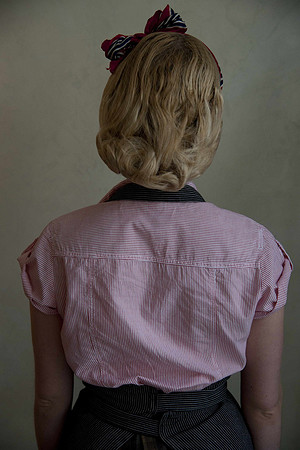
CNN Travel
Two artist-photographers have traced the footsteps of Stieg Larsson's crime-beating heroes to create a travel book with a Millennium series hook.
The travelogue "Tattoos Hornets Fire," produced in conjunction with VisitSweden, isn't a traditional, broad-view travel guide.
Instead, it shows readers where to eat like Larsson and live like Lisbeth Salander, the fictional protagonist of the writer's "Dragon Tattoo" novels.
Known artistically as the Hilton Brothers, Americans Christopher Makos and Paul Solberg present a grungy and dreamy Sweden centered on the Swedish novelist Larsson’s three novels: "The Girl with the Dragon Tattoo," "The Girl Who Played with Fire" and "The Girl Who Kicked the Hornets’ Nest."
07 March 2018
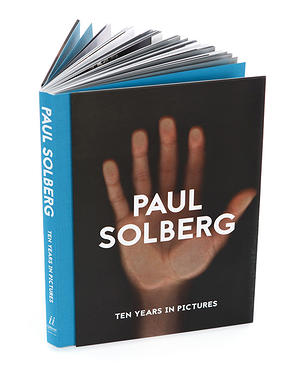
BOOK: PAUL SOLBERG TEN YEARS IN PICTURES
"Paul's images evoke bygone eras, while remaining fresh and immediate." - Sir Elton John
Huffington Post (Interview) Nov 2015
Document Journal Nov, 2015 (Interview)
WWD Oct, 2015 (Interview) Nov 2015
Shoot Me Magazine Oct Issue (Cover)
Shoot Me Magazine Nov Issue (Interview)
L'Oeil de la Photographie Oct 2015
ROOMS Magazine Oct 2015
THE ESSENTIAL BEAUTY OF THINGS
There are certain photographers who, in their gaze and personal way of understanding photography, strive to create other worlds where object and author are imbricated in a way that allows both to be fruitful and multiply, giving rise to a creative act. Others, under the pretext of that same quest for authorship, use the object of their work merely to deploy a preconceived vision of that which has caught their eye. They take what exists and twist it to suit their own interests, with the aim—often vain and trivial—of transforming it, laying claim to it, divesting it of all or part of its essence in a kind of vampirical act where the object is pushed into the background while the sole author hogs the limelight. This act of creative hubris is rarely found in combination with virtue, but when it is, we find ourselves before a masterpiece, a creation inextricably bound to its creator, and in it we recognize the genius of one who has managed to enter into a kind of positive communion with the objects, landscapes, or people he or she finds interesting. In short, we find ourselves facing the work of an artist. - excerpt from José Guirao essay
01 October 2015
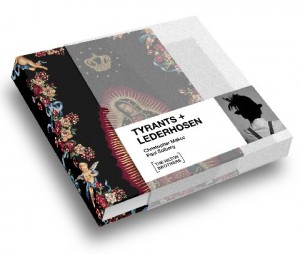
BOOK: Tyrants + Lederhosen
THE HILTON BROTHERS: TYRANTS + LEDERHOSEN ISBN: 9788415303121
The Hilton Brothers are the photographers Christopher Makos and Paul Solberg. Their moniker is derived from the Hilton Sisters, the 1930s Siamese-twin vaudeville stars--and of course from the hotel heiress Hilton sisters of today. Makos is already famed as a portraitist of many of the twentieth century's leading icons, particularly Andy Warhol, Elizabeth Taylor, John Lennon and Man Ray; Solberg is a rising talent who made his name with The Bloom Book, his 2005 collection of flower photographs. Makos and Solberg's first collaborative monograph as the Hilton Brothers takes the form of a travelogue compiling works made by the duo from 2004 to 2011. Tyrants + Lederhosen opens with separate sequences by each of the photographers, which preface their globe-trotting anthropological collaboration as they document and narrate their travels from America to Europe to the Middle East and Asia.
01 October 2011
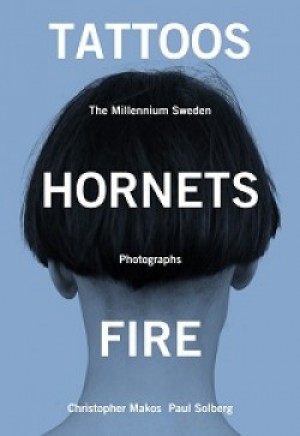
BOOK: Tattoos Hornets Fire (October 2012)
TATTOOS HORNETS FIRE for the first time presents a pictorial dimension to SWEDEN that has been introduced to so many readers of Stieg Larsson's luminous novels, and one that they have longed to know better. Stirring photography by internationally renowned photographers Paul Solberg and Christopher Makos, provide an ambience of the entirety of this beautiful, intriguing and widely unexplored country, not recently documented in book form.
Created with the important collaboration and support of VisitSweden, the Swedish tourist board, compelling images created exclusively for this book by two photographers widely acknowledged as the best in their field along with definitive explanations of the sites and their histories by one of Sweden's foremost travel guides combine to create an important document in addition to a compelling read and visual tour de force.
Click here: Tattoos Hornets Fire: Huffington Post
Click here: Pin Stockholm on Facebook
Click here: to purchase the book
Click here: to sample the book
01 October 2012
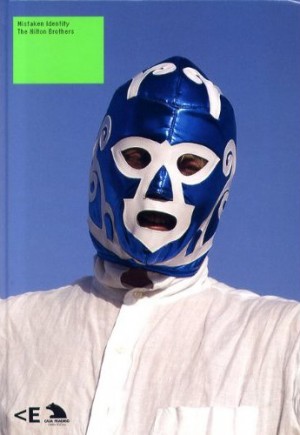
CATALOGUE: Mistaken Identity (museum catalogue)
The catalogue of the first museum solo show of the art duo, the Hilton Brothers. This work features the catalog of the exhibition 'Mistaken Identity' by The Hilton Brothers (Christopher Makos and Paul Solberg). The Hilton Brothers artistic duo emerged as a result of a series of collaborations between the two artists. While travelling a few years ago, they realized that they were interested in the same themes and, and decided to photograph the same things. The idea of identity - who took which photo and why was the difference discernible - led them to begin a series of diptychs in which they would photograph two objects separately but then put them together in the same print. This marked the beginning of their exploration of other collaborative projects. The Brother's photographs reveal a naive perspective diffused by a certain contemporary cynicism. Captured on their travels around the world, their images are the outcome of subdivisions and reconstructions in which the different locations of places are merely panels of aesthetic snippets combined to produce works which form an intrinsic part of their philosophy of life, taste and American culture.
02 August 2009
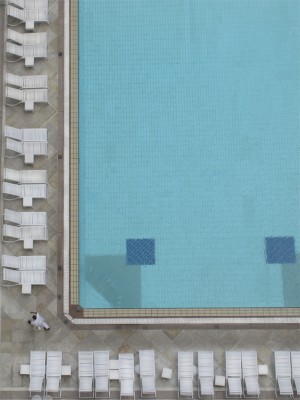
Pools Reflections - Kelly Klein
Paul Solberg's "Copacabana" (2010) photograph taken at the famous Copacabana Hotel in Rio is featured in Kelly Klein's new opus on the subject of the art of the POOL.
01 October 2012

Puppies Behind Bars
Glitterati, Inc New York 1234
Preface
LOVE DOCTORS
Draft. 3.12.07
I’m allergic to dogs. So, in the past, the relationship could only go so far.
When Chris called me from the airport to tell me about the unusual sighting of the dog in first class, his enthusiasm was infectious, as it often is. To my surprise, Chris asked me to join him, if this materialized into some kind of project. Three months later, I packed up my allergy pills, and we were off to prison.
It was the perfect weather for the quintessential first prison experience. Grey clouds, grey light. Cold. Damp. Walking up the hill to what seemed like miles of barbed wire. After predictably exhaustive security, we were escorted through several doors, with locks that rattled your knees. A reminder of where you were.
With this first impression, I only expected the experience to continue with this dark and ominous treble.
It was not what I had expected.
“The Human Condition” can parallel “The Dog Condition.” There are givers and there are takers; under-achievers and over-achievers; and there are dreamers. Some have the fortune of higher education, while some have what it takes, but can’t seem to catch a break. Some are just happy with being simple and pretty bitches.
The dogs in this program are the gifted handful who have it all, and have worked hard for it; and still, after all the success, their only interest is to give to others.
But like most pillars of society, they don’t make it to the top alone. As we know, it takes more than being simply gifted to succeed. The luck of having a brilliant teacher, who forgets teaching is a job and who invests in another with abandoned passion; this changes people. It also changes dogs.
For the dogs in this program, the inmate is the perfect teacher. For more than one year, the inmate lives with a student dog almost entirely, day and night, and the school bell never rings. The education is constant. When there are breaks from learning, it’s about playing, jumping, hugging, kissing; a recipe to make anyone a superhero. After eighteen months, the once untrained dog can turn on lights for the handicapped, see for the blind, or detect explosives to protect our cities.
Perhaps I’m influenced by this cynical time, but I hesitate to use the mistreated word, Love, but it would be inauthentic to avoid it. The dogs in this program are healers, “Love Doctors.” There are probably a number of ingredients required for a person to end up behind bars, but one most certainly is the absence of love. These dogs come into prison with only love to give, and in exchange, all they ask is time, something inmates have in abundance.
Unconditional love changes people, and manifests itself in finding purpose, hope, self-respect, and connection to others. Perhaps, this is the most potent force to reform or transform anyone. Like a parent basking in the glory of their successful child, for the inmate, they say good-buy to their success story, and send it off into the world to be a contributor; the dog, a messenger for redemption.
Paul Solberg,
05 October 2007
PAUL SOLBERG: THE ESSENTIAL BEAUTY OF THINGS
Photography, whether professional, artistic, documentary, or amateur, reveals the world to us. Never before has the subject been perceived as it is after being photographed, captured for posterity at a precise moment in history, under a certain light and with a specific framing.
There are certain photographers who, in their gaze and personal way of understanding photography, strive to create other worlds where object and author are imbricated in a way that allows both to be fruitful and multiply, giving rise to a creative act. Others, under the pretext of that same quest for authorship, use the object of their work merely to deploy a preconceived vision of that which has caught their eye. They take what exists and twist it to suit their own interests, with the aim—often vain and trivial—of transforming it, laying claim to it, divesting it of all or part of its essence in a kind of vampirical act where the object is pushed into the background while the sole author hogs the limelight. This act of creative hubris is rarely found in combination with virtue, but when it is, we find ourselves before a masterpiece, a creation inextricably bound to its creator, and in it we recognize the genius of one who has managed to enter into a kind of positive communion with the objects, landscapes, or people he or she finds interesting. In short, we find ourselves facing the work of an artist.
Yet there are other roads by which a few privileged artists manage to show us other worlds—realms of greater intimacy, precision, and truth. Those who travel such paths have a very different point of departure, which consists in shedding all prejudices and all preconceived intentions other than the determination to discover the essence of the object before their eyes. It is an exercise in letting go, like those masters of Zen philosophy who discover the true nature of the very act of thinking by emptying their minds of thought. In this way, each image they manage to produce becomes in itself an act of thinking, where nothing is wanting and nothing is superfluous. They attain that quasi-mystical state where objects and beings reveal their true essence, that which contains them entirely and makes them unique: not because they are intrinsically unique, nor because their initial appearance powerfully captures our attention at first glance, on first impression, but because someone—the photographer's eye—has been able to reveal to us, the surprised spectators, what makes them unique and universal in our eyes, to our understanding.
It is in this less obvious, more complex territory that Paul Solberg works, searching for something the rest of us are incapable of seeing or finding even when we seek it with dogged determination. To paraphrase Picasso, we might say that Solberg belongs to a class of artists who "do not seek, but find." It is no easy task, and most are not up to the challenge; only those who have flushed all accoutrements and superfluous temptations from their eyes can offer us an essential vision of the world, one in which we viewers recognize ourselves in a different way, transformed by the powerful, subtle gaze of the other, the author, who has worked the miracle of unveiling our own mystery, the mystery that alien enigmas hold for our eyes only.
When I observe Paul Solberg's images carefully, what I find surprising is not his often poignantly familiar motifs but that essential way he has of approaching them: he seems bound and determined to show them with absolute frankness, as if each image he presents to us were the only one possible. Once we have seen them, we cannot imagine them any other way. The artist's frankness leads to another reflection on the contemporary quality of photography and its possible fate, as an image that may or may not stand the test of time. Photographic images often betray, intentionally or unintentionally, the historical period in which they were taken, and in many cases—the majority, in fact—this betrayal makes them victims of the passing years. They will undoubtedly be useful for telling us what the world was like at a given historical moment; however, in such cases they will have survived by virtue of their documentary value, not the timelessness that every work of art aspires to achieve in order to make the passage of time its best ally rather than its worst enemy. In most of Solberg's images, we can detect that aura of timelessness which ensures that in the future they will retain all their freshness and suggestive power, and his work's promising future is precisely what also makes it more present.
José Guirao
Madrid, January 2015
15 October 2015
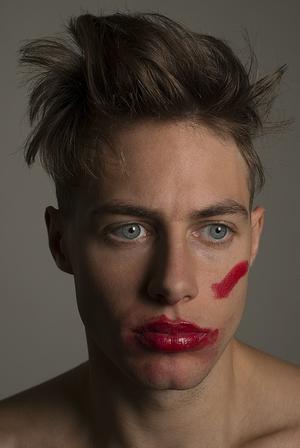
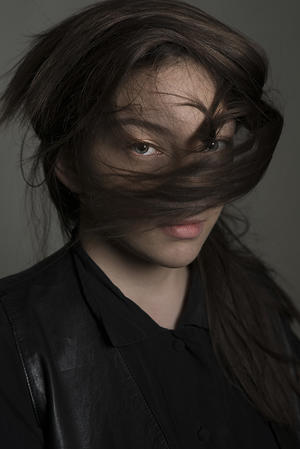
WWD: Paul Solberg on Photography and His New Book
“When I was 22, I sold raw meat for a company that was sort of five-star gourmet. You had to go door-to-door with T-bones, rib-eyes and filet mignons. You had them in the back of your car,” he said. “That was another job [where] I lasted two months. It was too hard. Horrific. I had dogs chasing after me.”
20 October 2015

L'OEIL DE LA PHOTOGRAPHIE
From Sicily to Jordan, Cairo to Vietnam, back to the wild and the un-wild American west; from the skin of a flower petal, to ethereal portraits of sailors, Ten Years in Pictures showcases rising photographer Paul Solberg’s diverse and poignant photographs.
Ten Years in Pictures also includes artworks as diverse as soulful animal portraits, an intimate portrait of Ai Weiwei, and haunting faces of America’s Armed Forces from Solberg’s Service series. Each photograph takes the viewer on an escape into another world. The book is sequenced in a deliberate, thought-provoking way, often emphasizing the sculptural quality of many of Solberg’s photographs. This is Paul Solberg’s fifth book of photography, his first book being Bloom (Glitterati Incorporated 2005). Paul Solberg’s photography is geographically and topically varied, while remaining consistently captivating.
18 October 2015
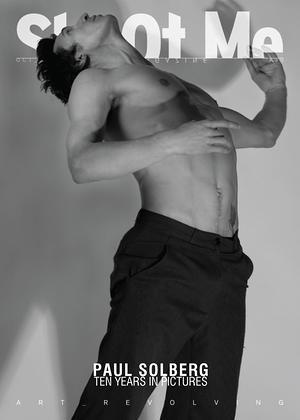
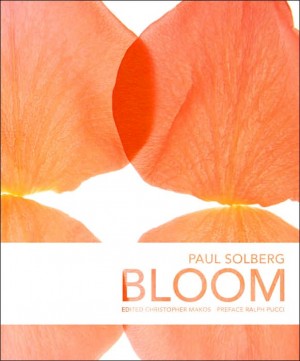
Bloom
Glitterati New York
When nature and art merge, brilliant and unexpected things can happen. Here, in conjunction with photographer/editor Christopher Makos, breakout artist Paul Solberg has created an astonishing collection of photographs. Solberg's BLOOM takes an oft-visited subject-flowers-and approaches it from a new, bold angle.
Working in a still-life, studio format, Solberg created sumptuous floral portraits detailing living entities. He captured the flowers at the moment of their most extraordinary beauty: when they are first blossoming. The reader will simultaneously see the static quality and ongoing nature of the living bloom: In almost three-dimensional work, the photo effervesces with tranquility.
Unlike the catalogue-esque quality of many books dedicated to flowers, BLOOM is not bogged down with saccharin sentimentality, and its images are crafted with precision and clarity. Paul Solberg is a photographic version of Georgia O'Keeffe as he turns petals into organic sculpture, blooms into modern architecture and curving stems into Balanchine dancers. Set against solid-colored backgrounds, the shots are as much about the space created around the flowers as the flowers themselves.
From the first time Christopher Makos and Ralph Pucci were introduced to Paul Solberg's work, they knew that they had found a new talent. World-renowned photographer Makos was impressed by a man new to his field, and recognized in Solberg a "hunger to know coupled with a love of beauty and a sense of wonder." And Ralph Pucci, a highly-regarded designer, thought his work was "fresh, modern, clean."
BLOOM's incredible beauty carries a universal quality, and it is sure to appeal to florists, fashion-lovers and art aficionados alike. But most of all, the book will create a following for the never-before-published Paul Solberg.
15 April 2005
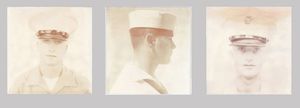
VAULT Magazine
During Fleet Week of 2010—that springtime ritual when thousands of young military servicepeople descend upon New York City—photographer Paul Solberg documented hundreds of soldiers, sailors and airmen in a series of intimate, haunting portraits. Using vintage Polaroid film, he aimed for an effect tinged with both timelessness and nostalgia; unfortunately (or perhaps fortunately), the film began to deteriorate soon after the images were taken. Albeit damaged, some could be saved and scanned, with the unplanned “accident” of their creation adding an extra visual frisson to the experience. Now, New York’s Casa de Costa gallery is showing them in an exhibition called “Service,” running through April 18th.
10 September 2012
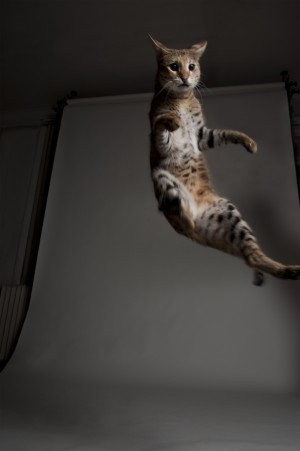
WILD CAT IN THE STUDIO !
The new pet for the extreme pet enthusiast, the semi-wild... mostly wild.. Savannah Cat.
Glenn Albin, one of the Mayors of the original Miami,
Florida, appropriately the Capital State for inappropriate breading. Anyway Glenn called me with the idea
of shooting what was called a “Savannah” Cat for Vault Magazine. Savannah is defined as part wild cat, and part well, not wild. Actually the Savannah cat is half African wild cat and half domestic. My guess is these genetics can vary depending on the cat. All I know is when this cat.. my cat, for one hour, a magical unforgettable hour.. was put in an enclosed space, a photography studio. It was big jumping, big thrusting, slithering, to unknown spaces deep in the studio. And waiting quietly, hoping nothing would be in its mouth when he arrived back. Hoping he'd arrive back.
This was an exhilarating time, but not the easiest
shoot. It was a day I was expecting this interesting hybrid to be presented to me, sort of like the Labra-doodle of the cat world, and it became really about survival. I ended up hiding behind my camera as the mysterious creature flung itself in contortions over my head.
Well I think the cat had a good time and enjoyed
being photographed.
Maybe for the New Yorker this trendy pet isn't such
a good idea. But for those looking for adventure, a gentle warning, but no one is judging.
11 September 2013
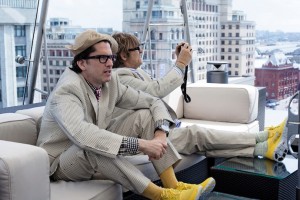

Artdaily
Paul Solberg's work, however, juxtapositions itself in strong contrast to that of Makos. The Photographer, whom Christopher Makos on his part allegedly called "America's most modern photographer" was born in 1969 in Minnesota/USA. He went through college studying Anthropology in Cape Town and Bophuthatswana/South Africa.. For the last ten years he and Christopher Makos have been working together as an artistic pair under the pseudonym The Hilton Brothers. Within these as well as Solberg's personal works the flower takes the central focus. Solberg's first publication Bloom from 2005 commits itself entirely to the flower and it's still-life-like portrayal. Solberg manages to show the object in an ever-new perspective, avoiding any kind of kitsch and at the same never too afraid to show the finest of details: making the feel and texture of the surface visible and creating an almost three-dimensional mini-universe. Apart from works from the Bloom cycle the Gallery also shows Solberg's ethereous white flowers and expressive Flower-portraits from his Flower Project.
10 February 2010
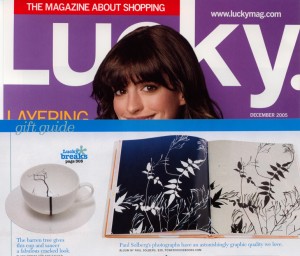
Lucky Magazine
New York, NY
a "must buy" gift -- Lucky Magazine
01 December 2005

The Word
Ho Chi Min City Vietnam
We arrived at our 6th hotel room after a day of traveling from the ancient city of Hoi An, on a quick stop over in Ho Chi Minh City before heading back to the west. With nearly a month of traveling the Far East behind us, we stumbled to this interview listless, but full of excitement about our Vietnamese experience.
Often for the American we hear "Vietnam" and we think "war".
When we left this country after a few weeks, the only word that came to mind was "Peace".
The people are beautiful. Quiet, elegant, forgiving. All you see is big smiles everywhere. They quietly remind the westerner that money is not required to be elegant and sophisticated
30 March 2009